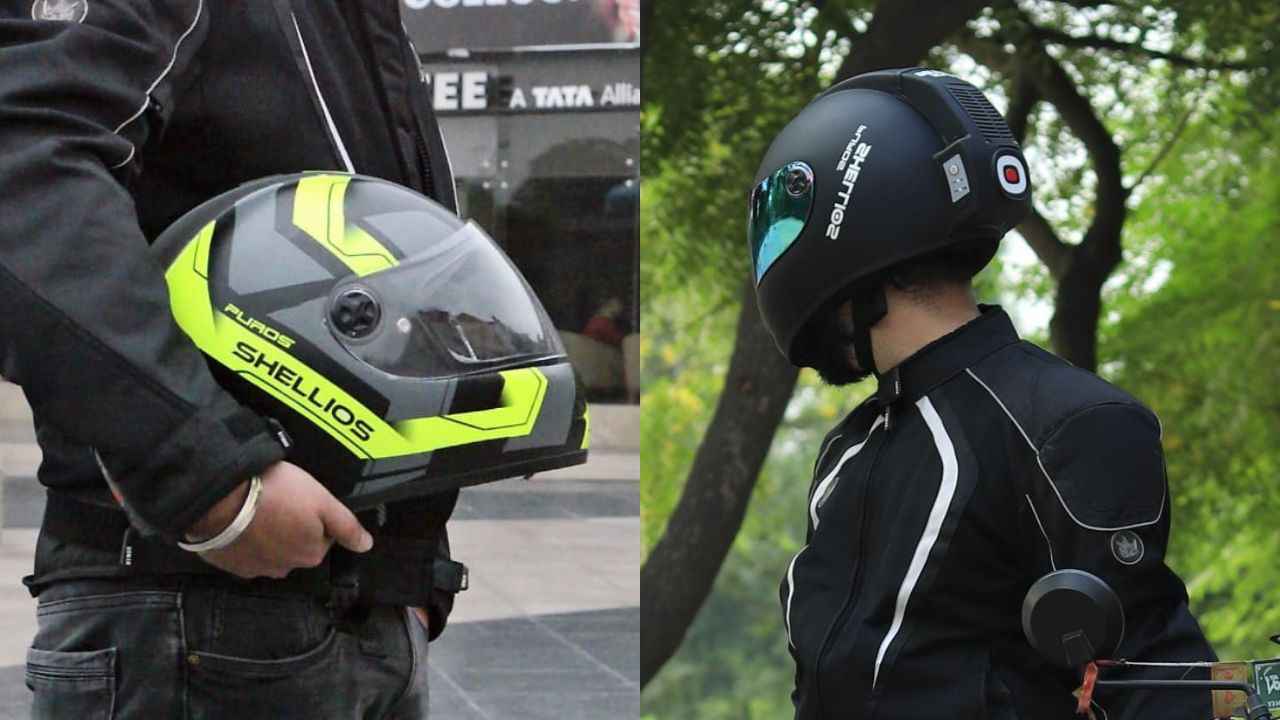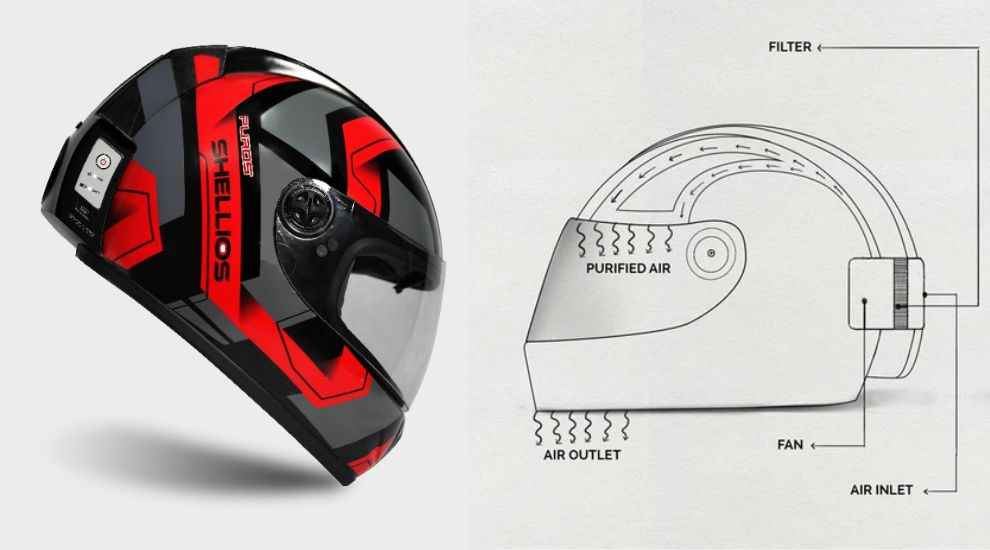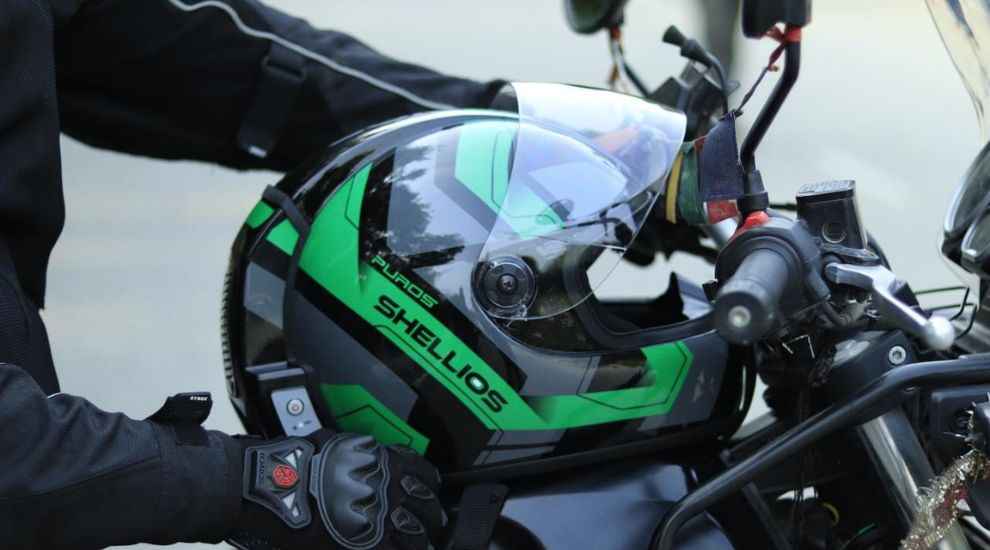Delhi startup’s smart helmet can fight air pollution on your commute: Here’s how

Helmet design has received a shot in the arm with Delhi-based startup Shelios Technolabs.
In an increasingly eco-dystopian world, an air-purifying helmet seems to be the future of protective headgear.
Shellios is also looking for opportunities to expand abroad.
Delhi-based startup Shellios Technolabs has recently patented an air-purifying helmet. Unless looked at with a keen eye, the anti-pollution helmet deftly passes off as any other ordinary helmet in the market – until the prying onlooker chances upon its backside.
Though inconspicuous, it is the backside of Shellios's helmet, fitted with a blower fan, a filter membrane and an electronic circuit, that makes it a new ball game in the protective headgear industry: Like commonplace helmets, it protects the skull from injuries during an unlucky crash; unlike commonplace helmets, it also protects the lungs from Particulate Matter 2.5 (PM2.5), which, arguably, is the single biggest environmental threat to human health.
"We have got an air-purification system attached behind the shell of the helmet," says Amit Pathak, the engineer who designed the helmet from scratch. "When you press the button on the backside, the fan fitted inside the helmet switches on, which pulls in air and passes it through a filter membrane. The filter sifts out PM2.5 particles, and the clean air is then circulated through the ducting to the breathing area of the bike rider. Further, there is a chin-curtain, so that the polluted air does not re-enter from the front side."
In other words, the helmet, suitably named Puros, filters out lung-damaging PM2.5 particles from the air before it reaches the rider's nostrils. The tests on New Delhi's streets by an independent laboratory confirm that the helmet can filter out more than 80% of pollutants. A 2019 test report seen by Digit shows that the helmet cut levels of PM2.5 particles from 43.1 micrograms per cubic metre to 8.1 micrograms.
The economics of air-purifying helmet design
In an increasingly eco-dystopian world, an air-purifying helmet seems to be the future of protective headgear, at least on the suffocating highways and stifling streets of New Delhi, which holds the honour of being the most polluted city in the world. Winters are the worst as every year a thick envelope of smog sets in the sprawling city and India's capital practically turns into a horrid gas chamber, with the air quality index way off the charts.
During those months, doctors – even the government – recommend against stepping outside, which, so to speak, is a piece of advice so ludicrous that most people, barring a privileged few, can only laugh at it while walking through the deadly smog. Until we somehow conquer the smog and pull down the ever-increasing levels of air pollution, air-purifying helmets can offer crucial protection to the riders of two-wheelers, particularly the bike-riding gig workers, who have no other choice but to expose themselves to Delhi's rotten air.
In the winter of 2016, when Shellios's founder Amit Pathak was developing the idea of an air-purifying helmet in the basement of his house in Noida, this was his original motivation. "2016 was the year when the media covered the very bad air quality situation in Delhi for the first time. Around that time, I was discussing ideas for a new venture. I was doing another business that was into software, but I was desiring to do something in the hardware domain. Digital and physical products were catching my interest. So we were discussing different things," Pathak recalls.
"At that time, air quality in Delhi was really bad and people were buying air purifiers for their homes. So I started thinking how bad it would be for people who are out on the road, driving occupationally for the most part of the day – the bike delivery people, the ride aggregation drivers, Zomato, Swiggy, Shadowfax, Courier guys, whose entire livelihood is on their two-wheeler. They would be riding anywhere from 12 to 14 hours a day. And so I thought, why not design a new kind of product, a new kind of helmet, which provides them with purified air? It wasn't like we set out to do something in the helmet domain – it wasn't really like that. We just wanted to build something which could solve the problem of the bike riders."
In a couple of years, Pathak, an alumnus of the Indian Institute of Technology – Roorkee, perfected his ingenious design and launched the air-purifying helmet on the market. At Rs 4500, the helmet is around four times costlier than a regular one, a price tag way out of reach of the section of the population most vulnerable, the delivery gig workers. "We haven't been able to service those people yet, and that's a challenge," Pathak admits. "People who purchased the product till now have been the people who care about their health enough to buy a relatively expensive helmet. But for the amount of tech that's there inside the helmet, it's not very expensive."
Future of smart helmet that fights air pollution
Shellios, as a fledgling startup, has a long way to go. For one, the company needs to work on a cheaper model of the helmet, which can serve a broader demographic of bike riders. Another challenge is its weight. At one and a half kilograms, the helmet sits heavy on the neck. In the next models, the company is aiming to bring down its weight to that of a regular helmet.
Outside the design, the main goal of the startup is to expand its marketing and make people aware of its product. Shellios is also looking for opportunities to expand abroad. "There is a lot of interest in the market right now. I have received queries for the helmet even from the cleaner countries – European nations, USA and Canada," Pathak says.
On these many fronts, Pathak and his ambitious company may or may not succeed. But he has certainly opened a gateway to reimagine the future of helmets in a way, which is more pragmatic than disruptive. Maybe the cool, futuristic helmets with heads-up displays, augmented reality and inbuilt cameras can wait until we subvert the impending climate catastrophe. As they say, it never hurts anyone to prioritise the perils of the present over the promises of an imagined future.
Anup Semwal
Anup Semwal writes at the intersection of technology and society. He is currently pursuing Convergent Journalism from AJK Mass Communication Research Centre, Jamia Millia Islamia View Full Profile








